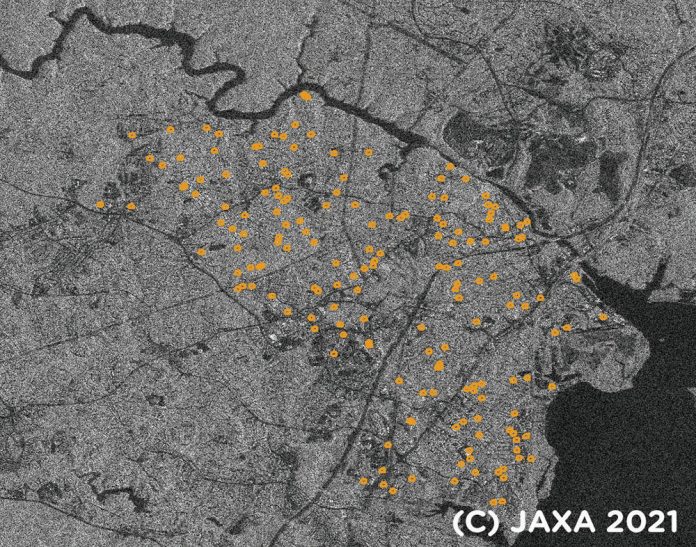By Nick Haskins
Numerous wastewater issues both in the UK and Europe have hogged the headlines in recent weeks. Overflow incidents, leakage problems, and environmental concerns, have garnered significant attention and disapproval from regulators, as well as celebrity critics like singer Feargal Sharkey and environmental charity Surfers Against Sewage.
Equally increasing is water utilities’ commitment to finding effective, cost-conscious resolutions, as evident in their recent pledge to invest £10 billion throughout this decade. This aims to drastically reduce sewage spills, which accounted for over 300,000 pollution incidents in 2022 according to the Environment Agency. As reported by news sources, the goal is to reduce pollution overflow incidents by up to 140,000 annually by 2030.
Sky-high accuracy: The wonders of satellite surveillance
Enter satellite surveillance for wastewater networks – a transformative solution by SUEZ and technology partner ASTERRA that will reshape how we tackle leaks and infiltration, protect our environment, and optimise utility resources. Imagine zapping leaks with precision hundreds of miles up above the Earth’s atmosphere that holds the potential to rewrite the narrative of wastewater management.
Based on the same technology used to find water on Mars, the satellite leak detection system was successfully brought to the UK by SUEZ and ASTERRA to help drinking water utilities zero in on their leakage problems. Now, it is being trialled by some UK utilities and tested in Europe for wastewater management.
Using L-band synthetic aperture radar (SAR) sensors, the satellite covers about 3,500 sq.km. of land and quickly narrows it down to locations with probable leaks, including non-surfacing ones. The sensors then pick up wastewater signatures, providing real-time surveillance and ongoing monitoring accessible to the customer. The analysis can also add ground water levels in the surrounding area of a potential leak, which then identifies the source of infiltration and targets remediations plans.
The value of precision
The satellite scans are overlaid onto a map with reports presented on Geographic Information System (GIS) files or via desktop application. Once this is done, Points of Interest (POI) appear on field crews’ mobile devices, guiding them to leak locations.
Using the ASTERRA MasterPlan, an actual measured indication of pipe condition, the pipe segments are analysed to see if they have signs of hidden leaks. Pipes are evaluated and graded, enabling smart allocation of resources. The scans also cluster leak locations, focusing rehabilitation works.
Satellite surveillance can be easily integrated into existing management systems because it is compatible with all GIS-based asset planning model software. This enhances the accuracy and efficiency of wastewater pipe management strategies.
The same images can be analysed using a different algorithm to look for leaks from potable pipes, therefore spreading the costs of the survey between budget holders and improving the efficiency of the project.
Very promising results
A recent trial by a city utility located in Texas, USA, found that surveying sewer pipes for defects was not only accurate but also saved a significant amount of crew time. Using satellite surveillance, the city identified over 300 POIs, highlighting 70 miles of pipes out of a total system length of 900 miles.
The city previously adopted a two-step approach: visual inspection for abnormalities and stagnant water or odours, followed by CCTV screening for defect identification, prioritised based on factors like material type (clay or plastic) and pipe age. Initially, three pipe fractures were found, one being so extreme that the CCTV camera could not pass through the section of the pipe. This more traditional technique, unfortunately, did not yield increased performance results.
Using satellite-identified POIs, on the other hand, saved time by focusing CCTV inspections on select areas rather than the entire system; a more efficient way to identify wastewater exfiltration and minimise water contamination.
Consistently high hit rates
Closer to home, one of the UK’s water utilities is testing monthly satellite surveillance for its wastewater network. The utility’s aims are to find potential leaks before they turn into pollution events. To test out the satellite, the utility provided a pipe map of a region and asked SUEZ and ASTERRA to identify any leaks. The water company was aware of the leaks in this area but didn’t share them for the purposes of the test.
The trial showed the real potential of this technology, achieving an 80% hit rate in detecting these known leaks on the network.
Going forward
To date, trials have focused on rising sewer mains, but the technology can extend to gravity sewers and other below-ground assets in high-risk zones, pending the utility’s resolution of logistical and financial POI challenges.
What is evident from the trials are the limitations of current wastewater leak finding techniques and technologies, such as visual inspection and CCTV. They just don’t have the capability to cover wide areas. They are people and equipment intensive, and therefore logistically difficult and expensive.
The trials highlight satellite surveillance’s potential in detecting wastewater leaks – an efficient, non-intrusive method that boosts network efficiency and environmental performance. With SUEZ and ASTERRA’s continued commitment, a fresh era of wastewater surveillance and sustainability solutions emerges.
Nick Haskins is a water industry professional of 29 years. After 17 years with Bristol Water, he now applies his expertise and experience with smart and environmental solutions, introducing innovative technologies into the water industry and working with the vast range of challenges that water companies face around the world.



